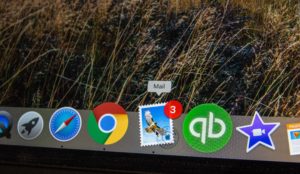No matter the industry or service we work in or engage with, we’ve all experienced email marketing in some capacity. Whether it’s bi-weekly deals and offers from our favorite clothing brand, a quarterly nonprofit newsletter, or updates from the doctor’s office, email marketing fills our inboxes daily.
So, let’s break it down. Email is a low-cost marketing method used to share information and ultimately drive conversions for a business or organization. It’s a great way to stay top-of-mind with customers in between purchases or engagements. If you’re not already marketing via email, you might be thinking to yourself…I already have so many channels to keep track of from social media to my website, and everything in between, why should I add another content marketing strategy to the mix?
Here’s why.
 According to a 2015 study from the Direct Marketing Association, a U.K. based company, email marketing has an average Return on Investment (ROI) of about $45 (€38) for every approximate $1 (€1) spent. Email marketing is useful, cost-effective, and it works.
According to a 2015 study from the Direct Marketing Association, a U.K. based company, email marketing has an average Return on Investment (ROI) of about $45 (€38) for every approximate $1 (€1) spent. Email marketing is useful, cost-effective, and it works.
You may think email marketing might only work for e-commerce or retail, but that’s not true. Regardless of what industry you are in, there is a big opportunity for email marketing to benefit your business or organization in more ways than you might think. Let’s take a look at the nonprofit and healthcare industries as examples.
Nonprofits & Email Marketing
One important question to ask yourself as you create your email marketing strategy is: Who is my audience? Nonprofits can benefit from separating audiences into various categories. This is called segmentation.
Email segmentation: the division of email subscribers into smaller groups based on a set of criteria.
Generally, at a nonprofit, audience buckets might include donors, volunteers, and mission-driven supporters. Instead of sending one generic, blanket email to all of your subscribers, think about what each audience is interested in. For example, for your:
 Donors. Provide numbers! Show where their donor dollars are going and what their dollars have achieved or will achieve soon.
Donors. Provide numbers! Show where their donor dollars are going and what their dollars have achieved or will achieve soon.- Volunteers. Do you have one person that has been volunteering for years? Tell their story. Also, post your volunteer days on social and encourage current volunteers to share with their friends.
- General supporters. Share what your nonprofit has achieved and why you do the amazing work you do every day. Highlight employees, volunteers, donors, or new services and provide a call-to-action (CTA) to deeper engage your general audience base.
In segmenting your emails and honing in on the things your audiences truly care about, you will create a dedicated community of supporters that are more likely to engage with your organization.
Healthcare Organizations & Email Marketing
Keeping in touch with your patients at an appropriate cadence is important for any healthcare provider. And we say at an appropriate cadence because you never want to overwhelm your patients with an influx of irrelevant emails. A good idea is to send automated emails surrounding a patient’s appointment, and then send a newsletter on a less frequent basis, say once per month.
 For example, for automated emails, send an email after a patient has confirmed their appointment, one day before their appointment as a reminder, and after their appointment to thank them for coming in and encourage them to reach out with any questions. Your monthly newsletter could include a mix of video and written content from your organization’s blog, general healthcare tips related to your practice’s specialty, or patient testimonials. Additionally, share interviews featuring the practice’s doctor, upcoming speaking engagements, and media wins to show your patients you are a trusted expert in your field.
For example, for automated emails, send an email after a patient has confirmed their appointment, one day before their appointment as a reminder, and after their appointment to thank them for coming in and encourage them to reach out with any questions. Your monthly newsletter could include a mix of video and written content from your organization’s blog, general healthcare tips related to your practice’s specialty, or patient testimonials. Additionally, share interviews featuring the practice’s doctor, upcoming speaking engagements, and media wins to show your patients you are a trusted expert in your field.
If you’re not sure what type of content your patients might be interested in, ask! Send a survey to patients and find out what they care about and their preferred communication channels. You’re wasting valuable time if you’re creating content for channels your patients don’t use. To garner responses, offer an incentive. Patients who complete the survey by a stated deadline could be entered into a drawing for a free electric toothbrush or 15-minute telehealth consultation.
The options are endless when it comes to email marketing. Just think about your audience base and what they care about most. This will keep them engaged and create long-term loyalty.
As a final note
Now that you know email marketing is a huge part of any marketing strategy, how do you get started? First, segment your audiences and find out what they care about. Second, do some research and find what platform(s) works best for your organization. There are many, but Bloom’s favorite is Mailchimp. The user-interface is simple to navigate, allows you to easily manage subscribers, and provides insights and data reports. There is a cost associated, but it is well worth it for the ease of use.
So, what are you waiting for? Get your email marketing strategy started today! And if you still feel like you need some guidance for your business or organization, request a free assessment from us.
